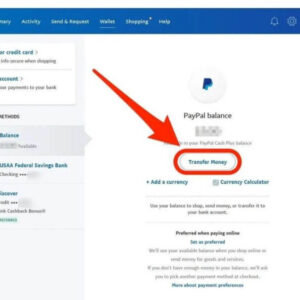What is Sharepoint Microsoft? What is a SharePoint Farm? SharePoint is a proprietary, web-based collaborative platform that integrates natively with Microsoft 365. Launched in 2001, SharePoint is primarily sold as a document management and storage system, although it is also used for sharing information through an intranet, implementing internal applications, and for implementing business processes.
According to Microsoft, as of December 2020 SharePoint had over 200 million users.
What is Sharepoint Microsoft?
SharePoint is a collaboration system that uses workflow applications, “list” databases, and other web parts and security features to empower business teams to work together. SharePoint also gives the company using the platform the ability to control access to information and automate workflow processes across business units.
What is SharePoint Online?
The Microsoft Cloud version of SharePoint, SharePoint Online, has many additional integration capabilities with other cloud applications. It is paired in functionality with many of the other offerings Microsoft packages with an Office 365 or Microsoft 365 license.

What Are the Benefits of Using SharePoint?
SharePoint enables increased productivity and visibility for information workers across all verticals, in businesses large and small. The features of SharePoint are centered around an intranet-based cross-collaboration experience that enables secure sharing, content management, and workflow collaboration features, among many others.
For a website-based collaboration platform SharePoint is easy to maintain and, at its fundamental level, easy for business users to understand. It is also infinitely customizable and massively scalable, there are many different ways that businesses utilize the platform to realize increased productivity and return on investment.
What Is SharePoint Used For?
SharePoint has been integral in the past 17 years in increasing working efficiency in Fortune 500 companies as an “Intranet” platform that crosses all business sectors. The many features of the platform make it much easier for people to work together on ad-hoc projects and establish standard business processes for information sharing, document publishing, and recording data.
Features like security controls, co-authoring, versioning, and integration with Exchange (Outlook Email Applications) give business users the capability to do more in less time and maintain the integrity of the work they produce. SharePoint includes the ability to:
- Require approval on documents before they are visible
- “Check out” documents to prevent any other authoring or editing on them
- Get notifications when documents are uploaded or changes are made
- Make workflows using if/then logic to automate actions such as moving or emailing documents, and recording information
All of these features enhance the productivity of business users, but the thing that SharePoint really does better than prior document collaboration systems is display information about what information/documents are stored and why.
It is extremely easy in SharePoint to require that “metadata,” or information about data (like modified time, created by, etc., but also custom ‘tags’ on documents or items) so that workers can better understand why a document may exist and why it is important without having to open it. SharePoint even allows users to create custom databases in an easy-to-use format, and record thousands of pieces of information that can be integrated into the previously mentioned workflows or other business processes.
What is a SharePoint App?
Apps in Microsoft SharePoint are integrations that add features to the standard collaboration spaces on the platform. Some apps are out of the box and come with the platform, but there are many others that add features and options that do not come with the regular SharePoint platform. These could be anything from a library where users can store and share documents and files, to calendar plug-ins, to powerful workflow apps like Nintex, which enable many repeatable logical actions in SharePoint with ease.
How is SharePoint Useful for Collaboration?
SharePoint provides a web-based space where users can upload a document to immediately be shared with other people that need to see it. They can also have their own personal storage space called OneDrive, where no one can see a document or file they upload until they “share” or allow access to that document with other users.
This makes enabling a segment of co-workers to see a published document a one-step process–but it doesn’t have to be. The approval and workflow features mentioned above can control how documents are shared and how employees work on information in their organizations.
Links to shared documents or collaboration spaces can also easily be sent via email, making it easy for users to be quickly directed to exactly what they want to see.
Organizations frequently use SharePoint to publish company-wide information such as HR documents, announcements, and memos.
How Can SharePoint Be Used for Content Management?
SharePoint enables many ways to add metadata to files for sorting, organizing and keeping track of the content owned by businesses. More importantly, as a platform, SharePoint can force tags onto content as business users upload them to collaboration spaces. They can also make end users provide metadata about documents as part of this process.
Once the content and metadata is in the platform, SharePoint empowers organizations with workflow tools to automate:
- Processes based on information given by end users
- Content life cycle tools to enable records disposition
- Disposal of information based on business policies
A majority of Fortune 500 companies have relied on the SharePoint platform for more than a decade, and the SharePoint ecosystem is a multi-billion dollar industry. With the new capabilities of SharePoint Online as part of the Office 365/Microsoft 365 Cloud Application, as well as tie-ins to services like Flow, Office 365 Groups and Teams, SharePoint and SharePoint-based services are increasingly relevant across all industry verticals.

What is a SharePoint Farm?
Simply defined, a SharePoint farm is the collection of servers that work together to fill the SharePoint roles, to make SharePoint work. If you’re not familiar with that term, think of roles as different jobs that each require particular skills. Once you’re ready to set up SharePoint, you configure each server in your farm to perform one or more roles.
A fitting analogy for roles is a team working together toward a common goal (yay collaboration!). For example: a restaurant crew. In a restaurant, you have the host to seat patrons, the waiter who takes the patron’s order and ultimately brings them their meal, and the kitchen staff who prepare the meal. Eliminate the host and the patron never gets a seat. Lose the server and the patron never gets to place an order, eat, or even get a lousy glass of water.
You get the idea. Of course, one person could fill all of those roles – like in a small coffee shop where the person behind the counter takes your order, tells you to sit anywhere, and then butters and brings you your bagel. This only works if the place isn’t flooded with customers, though, as that one person would get overwhelmed quickly. Your farm servers work the same way, where a single server can play all the roles, or you can spread the roles out across multiple servers for better performance.
In SharePoint, there are three roles (formally defined in the SharePoint installation wizard alongside a few new roles for SharePoint Server 2016). These roles are the Web Front End (WFE), Application Server, and Database Server.
Above is information about What is Sharepoint Microsoft? What is a SharePoint Farm? that we have compiled. Hopefully, through the above content, you have a more detailed understanding of Sharepoint Microsoft. Thank you for reading our post.









